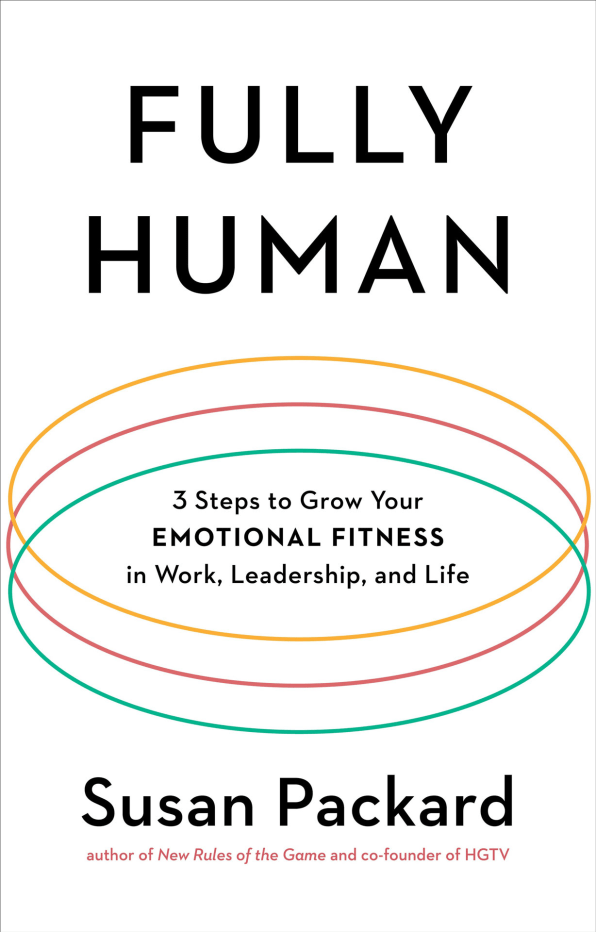#CareerAdvice : #CareerDirection – How to use #EmotionalIntelligence to Find a Job that’s Right for You.
“Good job fit” is one of those overused phrases that has lost some of its meaning. What is it? What happens when the job you thought was your dream job, or the job that would catapult you to great success makes you feel anxious, out of step, scrambling to keep your balance?
When we talk about good job fit, we overlook the thing that is most important, And to get to that stage, we can’t take shortcuts–we have to deploy a kind of emotional intelligence that I call EQ Fitness.
THE THREE STEPS TO EQ FITNESS
There are three steps to EQ Fitness: (1) the willingness to become self-aware (2) the openness to build trust, and the steadiness to lead, and live, guided by inner principles. Step one is the most crucial, because it’s the foundation on which you build the next two steps.
I see examples of those who get it right, and those who don’t in a lot of the keynotes and consulting I do. In many cities today, start-up accelerators and incubators offer stipends and grants to enterprising young adults, who, in turn, grow their business there. One evening, after I gave remarks at an event in Detroit, a young woman, no more than twenty-two years old, raised her hand and asked me, “I’m really good at new ideas and working to get them off the ground,” she said. “But I’m not great at process. How do I get to be a complete CEO?”
My knee-jerk reaction was to say, who’d want to be in charge of process? Get someone else to do that! After all, I was just like her–I’ve hated process my whole career. But I took a mindful moment and instead offered encouragement and praise for her self-awareness. I then explained that we generally fall into categories of builder-entrepreneur or process-systems person. Our job in developing ourselves is first to identify which one we are, then to work on improving the other skill-sets–especially if we want a leadership position, because great leaders need both.
Like this Article ? Share It ! You now can easily enjoy/follow/share Today our Award Winning Articles/Blogs with Now Over 2.5 Million Growing Participates Worldwide in our various Social Media formats below:
FSC LinkedIn Network: www.linkedin.com/in/fscnetwork
Facebook: http://www.facebook.com/pages/First-Sun-Consulting-LLC-Outplacement-Services/213542315355343?sk=wall
Google+: https://plus.google.com/115673713231115398101/posts?hl=en
Twitter: Follow us @ firstsunllc
Question: Want the ‘the best/current articles/blogs on the web’ on Job Search, Resume, Advancing/Changing your Career, or simply Managing People?
Answer: Simply go to our FSC Career Blog below & type(#career, #leadership, #life) in Blog Search: https://www.firstsun.com/fsc-career-blog/
What Skill Sets do You have to be ‘Sharpened’ ?
Continue of article:
WHAT MAKES YOU HAPPY?
Before you identify which label best fits you, start with a simple question: What makes you smile after you’ve done it? Use that as a gauge of possibilities. It could be taking your eye for detail and becoming an architect or city planner. It could be using your curiosity about people’s lives and becoming a journalist or joining a human resources department.
Consider, too, the kind of role that you want to play in an organization. I have a talented friend Angela, who has chosen not to manage people. That decision was born from self-awareness. Another friend, Babs, works at an enormous aerospace company, and she describes how her boss will walk toward her cube with a certain look every year or so. She knows what’s coming. The boss is looking for someone to fill a newly vacant management position. Babs said she and her colleagues all put their heads down, pretending to be engrossed in some project. None of them want to manage anyone.
HOW TO TELL IF YOU’RE ON THE RIGHT PATH
My HGTV boss, Ken Lowe, and I were working side by side as CEO and COO. He got a corporate nod to take over the parent company, E.W. Scripps, and wanted to know if I wanted his job as CEO. I slept on it and surprised him by telling him no. But the answer didn’t surprise me. I knew myself well enough to know that his job wouldn’t be a good fit. Being CEO is all-consuming, with a responsibility to shareholders and employees alike. I needed some work-life balance for myself and my family, and I knew I had to stop at number two–even if it meant diminished opportunities at HGTV or another company in the future.

Some people might see this choice as limiting, but for me, it opened up other opportunities and interests that were more important to explore. By staying on as the COO, I was able to grow a variety of business areas at Scripps Networks Interactive (the home of HGTV) and had the time and bandwidth to train and prep for the New York City Marathon.
To determine whether or not you’re on the right path, you need to figure out the following: where your natural strengths lie, what interests and stimulates you, and what kind of company culture allows you to thrive. It’s also essential for you to realize that you need to make decisions that will enable you to live your ideal life, not someone else’s version of it.
Throughout our working lives, we’ll come to many crossroads, as our professional identities unfold and unpredictable opportunities arise. It takes courage and integrity to absorb the big picture when it comes to job fit. Emotionally fit people see job fit in its broadest sense because it means taking ownership and accountability over choosing wisely, and taking into account where your heart is guiding you. This means going beyond considering what you can do, to what you love to do, so that “can do” doesn’t become a life sentence.
This article is adapted from Fully Human: 3 Steps To Grow Your Emotional Fitness In Work, Leadership, and Life. It is reprinted with permission from TarcherPerigee, an imprint of Penguin Publishing Group, a division of Penguin Random House LLC. Copyright © 2019 by Susan Packard.
FastCompany.com | February 6, 2019 | BY SUSAN PACKARD
4 MINUTE READ




